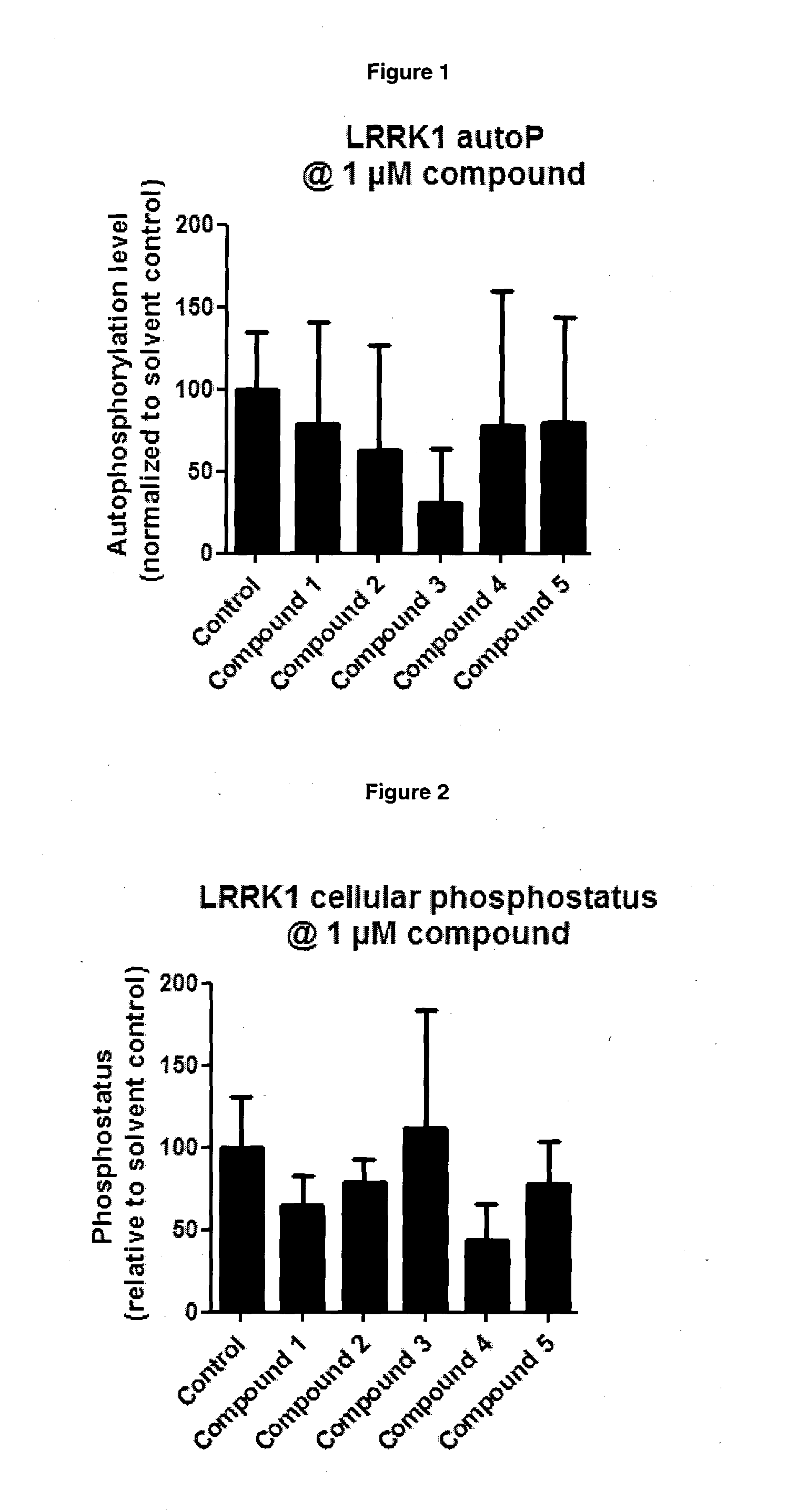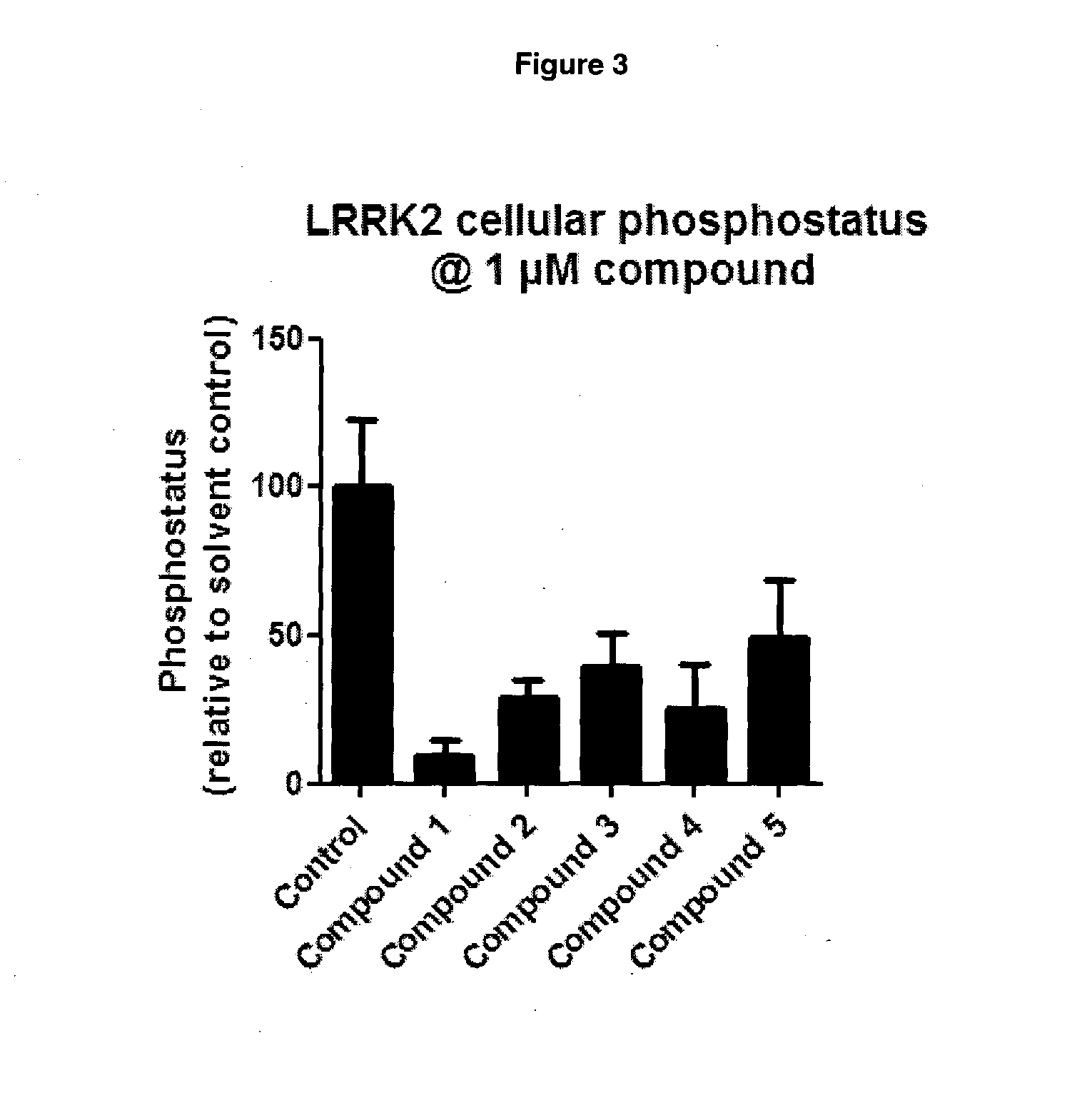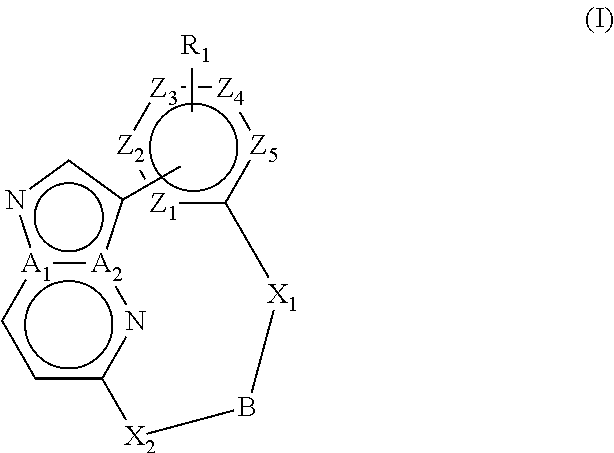Macrocyclic LRRK2 kinase inhibitors
a kinase inhibitor and macrocyclic compound technology, applied in the field of macrocyclic compound lrrk2 inhibitors, can solve the problems of cognitive and behavioural problems, and none of the compounds disclosed in said references have been shown to have lrrk2 inhibitory activity
- Summary
- Abstract
- Description
- Claims
- Application Information
AI Technical Summary
Benefits of technology
Problems solved by technology
Method used
Image
Examples
example 1
[0490]Example 1 is prepared following general scheme 1.
Preparation of Intermediate 1
[0491]
[0492]A mixture of 2-(2-aminoethylamino)ethanol (14.56 g, 139.80 mmol) and isoindoline-1,3-dione (20.16 g, 137.00 mmol) in toluene (420 ml) was refluxed for 3 hours. The solvent was removed under reduced pressure and the residue was used in the next step without further purification.
[0493]LCMS method 1: MH+=235, RT=0.181 min
Preparation of Intermediate 2
[0494]
[0495]Tert-butyldimethylsilyl chloride (31.0 g, 205.5 mmol) was added to a suspension of intermediate 1 (32.0 g, 137.0 mmol) and triethylamine (38.0 ml, 274.0 mmol) in N,N-dimethylformamide (411 ml). The mixture was stirred overnight at room temperature. The reaction mixture was diluted with ethyl acetate and washed with water and brine (3×). The organic layer was dried, filtered and the solvent was removed under reduced pressure. The residue was purified by flash column chromatography using heptane and ethyl acetate as eluents. The product...
preparation of example 1
[0507]
[0508]A mixture of 7-oxa-10,13,17,18,21-pentaazatetracyclo[12.5.2.1̂{2,6}.0̂{17,20}]docosa-1(20),2,4,6(22),14(21),-15,18-heptaene (0.2 g, 0.6 mmol) and triethylamine (208 μl, 1.5 mmol) in dry tetrahydrofuran (5 ml) was stirred for 5 minutes and then cyclopropanecarbonyl chloride (60 μl, 0.66 mmol) was added. The mixture was stirred at room temperature for 1 hour. The solvent was removed under reduced pressure and the residue was triturated in methanol to give the desired product.
[0509]Yield: 156 mg of example 1 (72%)
[0510]LCMS method 1: MH+=364, RT=1.059 min
example 2
[0511]Example 2 is prepared following general scheme 2.
Preparation of Intermediate 5
[0512]
[0513]A mixture of 3-bromo-5-chloro-pyrazolo[1,5-a]pyrimidine (5.0 g, 21.5 mmol), tert-butyl N-(2-aminoethyl)carbamate (4.22 ml, 26.89 mmol) and N,N-diisopropylethylamine (4.5 ml, 25.81 mmol) in acetonitrile (65 ml) was refluxed overnight. The reaction mixture was cooled and the solvent was removed under reduced pressure. The residue was dissolved in ethyl acetate and washed with water and brine. The organic layer was dried, filtered and the solvent was removed under reduced pressure. The residue was purified by flash column chromatography over silica gel using heptane and ethyl acetate as eluents. The product fractions were collected and the solvent was evaporated.
[0514]Yield: 4.91 g of intermediate 5 (64%)
[0515]LCMS method 1: MH+=356, RT=1.035 min
Preparation of Intermediate 6
[0516]
[0517]A mixture of intermediate 5 (4.91 g, 13.79 mmol), tert-butoxycarbonyl anhydride (3.31 g, 15.17 mmol), triet...
PUM
| Property | Measurement | Unit |
|---|---|---|
| particle size | aaaaa | aaaaa |
| weight | aaaaa | aaaaa |
| weight | aaaaa | aaaaa |
Abstract
Description
Claims
Application Information
 Login to View More
Login to View More - R&D
- Intellectual Property
- Life Sciences
- Materials
- Tech Scout
- Unparalleled Data Quality
- Higher Quality Content
- 60% Fewer Hallucinations
Browse by: Latest US Patents, China's latest patents, Technical Efficacy Thesaurus, Application Domain, Technology Topic, Popular Technical Reports.
© 2025 PatSnap. All rights reserved.Legal|Privacy policy|Modern Slavery Act Transparency Statement|Sitemap|About US| Contact US: help@patsnap.com



